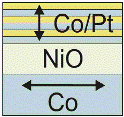Department of Physics and Astronomy: Publications and Other Research

Shireen Adenwalla Papers
Document Type
Article
Date of this Version
1997
Abstract
Flux line lattices in superconductors have been extensively studied in bulk samples by a variety of techniques including neutron diffraction. We present a technique that is useful for studying the flux lattice in a thin film in the configuration where the field ~and hence the flux lines! is parallel to the sample surface. This configuration provides information about the in-plane order and is not accessible by other means ~e.g., scanning tunnel microscope, Bitter decoration!. A 5000-Å-thick niobium film epitaxially grown on an MgO substrate is studied by polarized neutron reflectometry ~PNR! in this parallel field geometry. In order to enhance the signal, a neutron standing wave resonator is created in the superconducting film by spin casting a thin layer of deuterated polystyrene on the Nb. The increased scattering caused by the presence of flux lines in the sample leads to a depletion of the reflected neutron beam at the resonant wave vector. Our results show the expected depletion in the superconducting state for fields at which flux lines are expected to be present. The field and temperature dependence of the data are consistent with scattering arising from flux lines. We discuss plans to prove that the source of the increased scattering is indeed the flux lines. The most conclusive evidence for a well-ordered flux lattice in the sample is the presence of off-specular diffraction, strongly enhanced by the standing wave in the resonator. Measurements to see this off-specular signal have proved unsuccessful, leading us to conclude that we may not have a well-ordered lattice in our superconducting sample.


Comments
© 1997 American Institute of Physics.